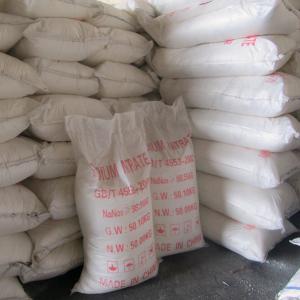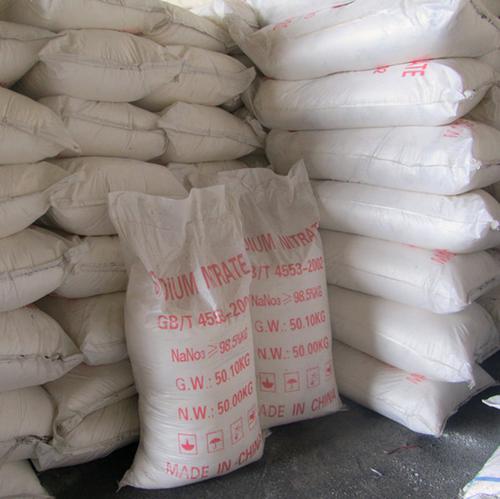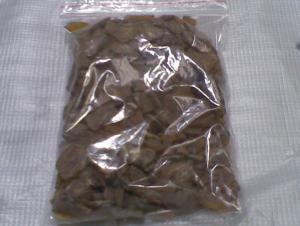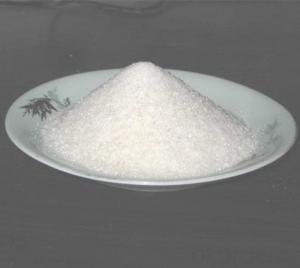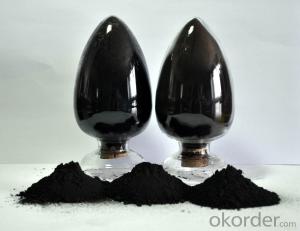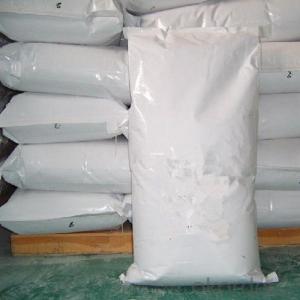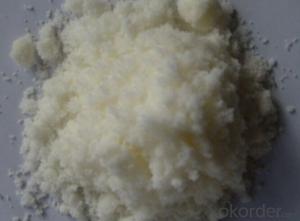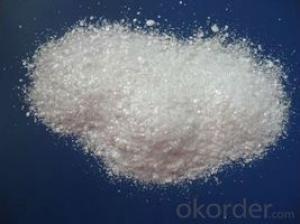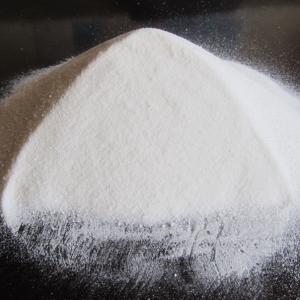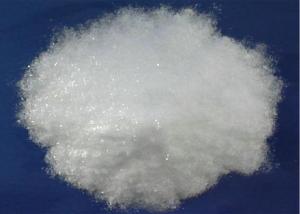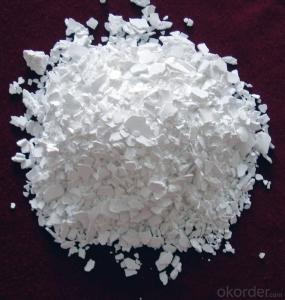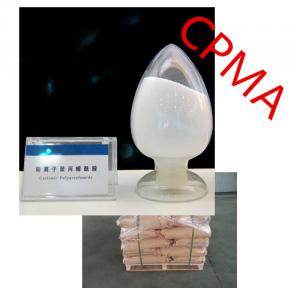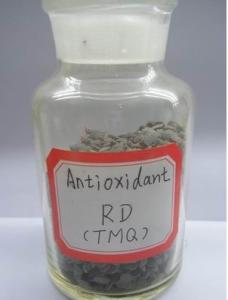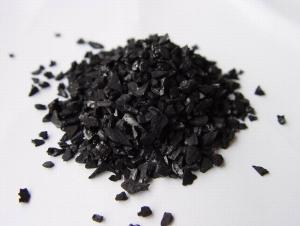Industrial grade sodium nitrate
- Loading Port:
- China Main Port
- Payment Terms:
- TT OR LC
- Min Order Qty:
- -
- Supply Capability:
- -
OKorder Service Pledge
OKorder Financial Service
You Might Also Like
Alias: Soda niter; Sodium nitrate for industrial use; cubicniter ; Natriumnitrat ; niter ; nitratedesodium ; nitratedesodium(french) ; nitrateofsoda; ; nitratine; Nitricacid,sodiumsalt ; nitricacidsodiumsalt
English Name: Sodium nitrate
CAS: 7631-99-4
EINECS: 231-554-3
Molecular formula: NaNO3
Performance: Colorless trigonal crystal or rhombus crystal or white slight crystal or powder, with no smell, salty flavor and light bitter.
Melting point306.8℃, relative density2.261, Easily soluble in water and liquid ammonia, soluble in alcohol, carbinol, light soluble in glycerol and acetone.
specification: GB/T4553-2002 and our technical index.
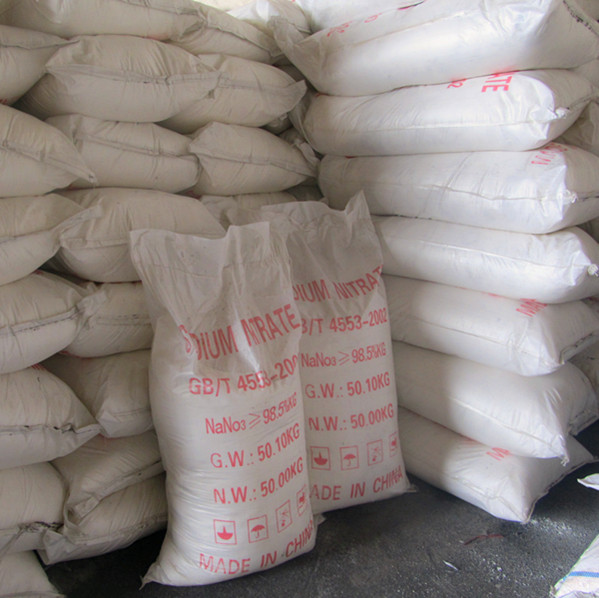
main index | unit | top quality product | second grade product |
content | %≥ | 99.3 | 98.5 |
moisture | %≤ | 0.1 | 0.1 |
water insoluble | %≤ | 0.06 | 0.06 |
Sodium nitrite(NaNO2 in dry basis) | %≤ | 0.02 | 0.2 |
chloride(Cl, in dry basis) | %≤ | 0.24 | 0.4 |
Sodium carbonate(Na2CO3 in dry basis) | %≤ | 0.10 | 0.1 |
Ferrumcontent(Fe) | %≤ | 0.005 | 0.005 |
heavy metal(Pb) | %≤ | --- | 0.002 |
arsenic content(As) | %≤ | --- | 0.0002 |
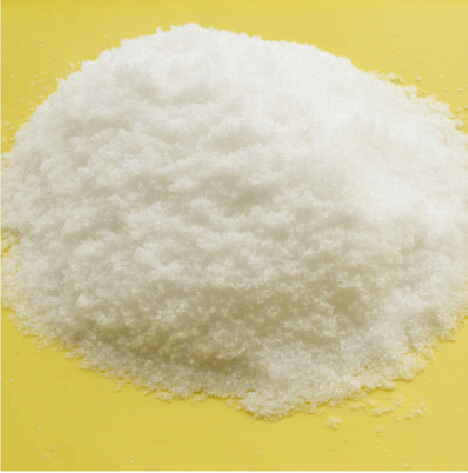
Properties:
Colorless cone crystal or rhombus crystal or white fine crystalline powder.
Uses:
The meterial of chemicals,dye and explosive,nitrifier,defoamer,decolor agent, clarificant,flux,chromogenic reagent,antimicrobial agent,antiseptic.
Packing
Plastic bag lined woven bag. Net wt.25/50kg.
- Q: What is positive and negative catalyst in chemistry?
- Positive catalyst can simultaneously speed up the positive and negative reaction rate
- Q: Does a catalyst work for both reactants and products?From my understanding, organic catalyst or enzyme does not necessarily work for the product of the reaction because of the shape of the activation site. However I cannot speak for inorganic ones.
- A catalyst works for either the reactants or the product in a given reaction. If it works for the reactants then the activation site on the enzyme, for example, will only fit on the reactants. If a catalyst is added to a reaction in which it catalyzes the back-reaction, or it aids the products, then the reaction will be reversed. i don't think a catalyst could work for both the reactants and products in one reaction because it wouldn't really be a catalyst anymore; it wouldn't make the rxn progress any faster since it would be canceling out itself by aiding both the reactants and the products. I think this is what you are asking, if not please post more details. I hope I didn't confuse you even more!
- Q: Could you tell me all the differences between those two catalysts? Thank you very much.
- One occurs in biological systems and the other is in chemical reactions. Biological catalysts are basically enzymes - proteins which regulate biochemical reactions whilst chemical catalysts act on non-biological chemical reactions and are inorganic elements or compounds.
- Q: What is the catalyst in the end?
- You said the chemical catalyst or Ati graphics card catalyst? If the above is enough to explain the above, if it is the latter, that is, the meaning of the graphics card, Ati's graphics drive like a catalyst
- Q: What is the microcosmic principle of the catalytic reaction in the chemical reaction?
- The catalyst reduces the activation rate of the reactants by increasing the reactant density of the reaction conditions and making the chemical reaction easier.
- Q: the heterogenous catalyst ZSM-5 IS used to convert ?
- Zeolite-based heterogeneous catalysts are used by industrial chemical companies in the interconversion of hydrocarbons and the alkylation of aromatic compounds. A very good example is the zeolite ZSM-5. This zeolite, developed by Mobil Oil, is an aluminosilicate zeolite with a high silica and low alumininum content. Its structure is based on channels with insecting tunnels. The aluminium sites are very acidic. The substitution of Al3+in place of the tetrahedral Si4+ silca requires the presence of an added postive charge. When this is H+, the acidity of the zeolite is very high. The reaction and catalysis chemistry of the ZSM-5 is due to this acidity. The ZSM-5 zeolite catalyst is used in the petroleum industry for hydrocarbon interconversion. An example use is in the isomerizations of xylene- from meta to para-xylene. The acidic zeolite promotes carbocation isomerizations. There are two suggested mechanisms for this type of isomerizations. Firstly shape may play a role. Perhaps para-xylene has a shape which allows it to diffuse rapidly through the zeolite structure, whereas as meta-xylene takes longer to pass through the zeolite and thus has more opportunity to be converted into the para-xylene. Secondly, is that the orientation of reactive intermediates within the zeolite channels favors specifically para-xylene.
- Q: What is the reaction of hydrogen peroxide to add manganese dioxide?
- There are bubbles produced
- Q: The chemical reaction equation of methanol heating and oxygen in the presence of catalyst
- 2CH3OH + O2 === 2HCHO + 2H2O
- Q: the process of which the heterogeneous catalyst work in vehicles. a step by step instruction in how they work. :)
- The Reduction Catalyst The reduction catalyst is the first stage of the catalytic converter. It uses platinum and rhodium to help reduce the NOx emissions. When an NO or NO2 molecule contacts the catalyst, the catalyst rips the nitrogen atom out of the molecule and holds on to it, freeing the oxygen in the form of O2. The nitrogen atoms bond with other nitrogen atoms that are also stuck to the catalyst, forming N2. For example: 2NO =N2 + O2 or 2NO2 =N2 + 2O2 The Oxidization Catalyst The oxidation catalyst is the second stage of the catalytic converter. It reduces the unburned hydrocarbons and carbon monoxide by burning (oxidizing) them over a platinum and palladium catalyst. This catalyst aids the reaction of the CO and hydrocarbons with the remaining oxygen in the exhaust gas. For example: 2CO + O2 =2CO2
- Q: Does all chemical reactions have a catalyst?
- Not some reaction without catalyst
Send your message to us
Industrial grade sodium nitrate
- Loading Port:
- China Main Port
- Payment Terms:
- TT OR LC
- Min Order Qty:
- -
- Supply Capability:
- -
OKorder Service Pledge
OKorder Financial Service
Similar products
Hot products
Hot Searches
Related keywords
